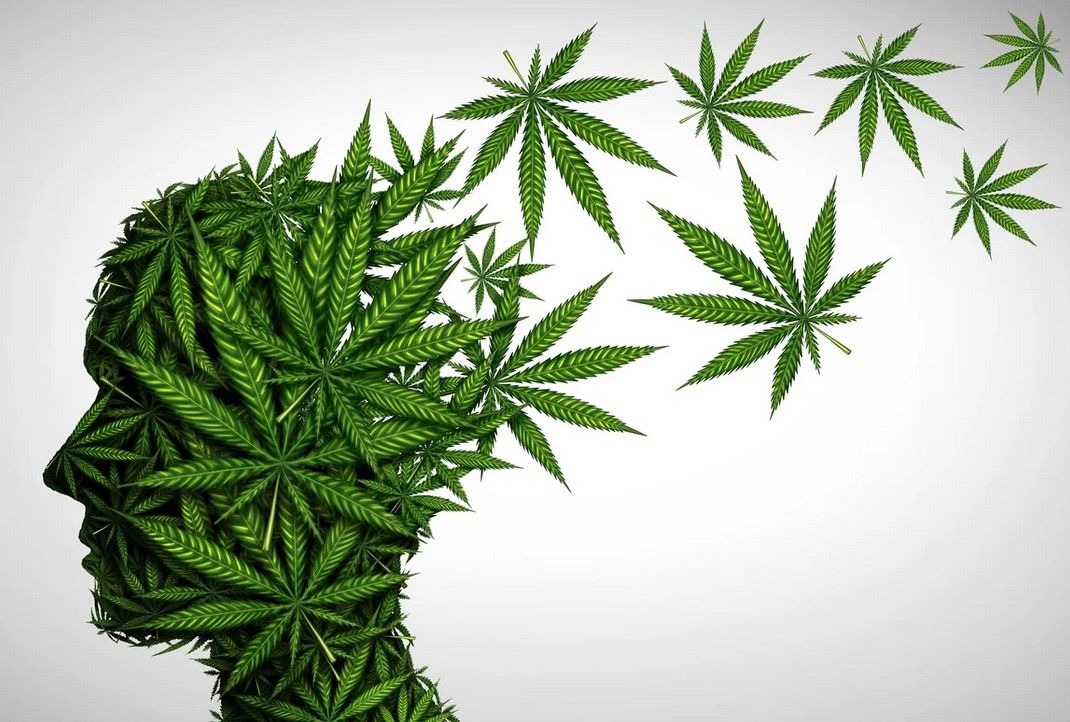With cannabis becoming more popular, you may feel pressure to try it. However, we understand if you’re apprehensive about being haut. If you are considering trying weed though, it’s important to know how THC affects your mind and body so that you can have a pleasant experience.
We’ll break down how it feels to get high, as well as how cannabis affects the brain.
For centuries, humans have smoked cannabis for its psychoactive effects. But how does this plant change our perceptions? In the following paragraphs, we’ll explain how cannabis affects the mind and why it’s able to do so.
Chemistry of the Cannabis High
You have to look a little closer at what you’re smoking in order to understand how cannabis makes you high.
The small, shiny, and crystalline glands known as trichomes that cover cannabis flowers produce a viscous resin rich in cannabinoids and terpenes.
Over time, growers have developed their cannabis strains in order to create resin high in a specific cannabinoid. Of course, that’s THC—the primary psychotropic cannabinoid—which has been shown to have the most mind-altering effects. It doesn’t just take effet once you’ve hit the bloodstream; rather, it activates very specific receptor locations to produce a sensation of euphoria.
All of us have an endocannabinoid system in our bodies, called the ECS for short. This regulatory system manages many of our bodily functions and keeps everything balanced. It is made up of cannabinoid receptors and endocannabinoids—signalling molecules that join to these receptors.
Anandamide is one of the major endocannabinoids in the body, and it binds to both CB1 and CB2 receptors. When it binds to CB1, it induces a sense of wellbeing and positive emotion – earning anandamide the title of “bliss molecule”. Scientists believe that anandamide also plays a role in inducing the euphoric “runner’s high” experienced by some athletes after aerobic exercise.
The THC in cannabis has a similar molecular structure to anandamide. Because of this, it can mimic the endocannabinoids in the human body and bind to the CB1 receptor, causing similar effects of happiness or euphoria.
When you smoke weed, THC goes to your lungs and then enters the bloodstream. It quickly gets to the brain and starts connecting to CB1 receptors on neurons. This increases dopamine production.
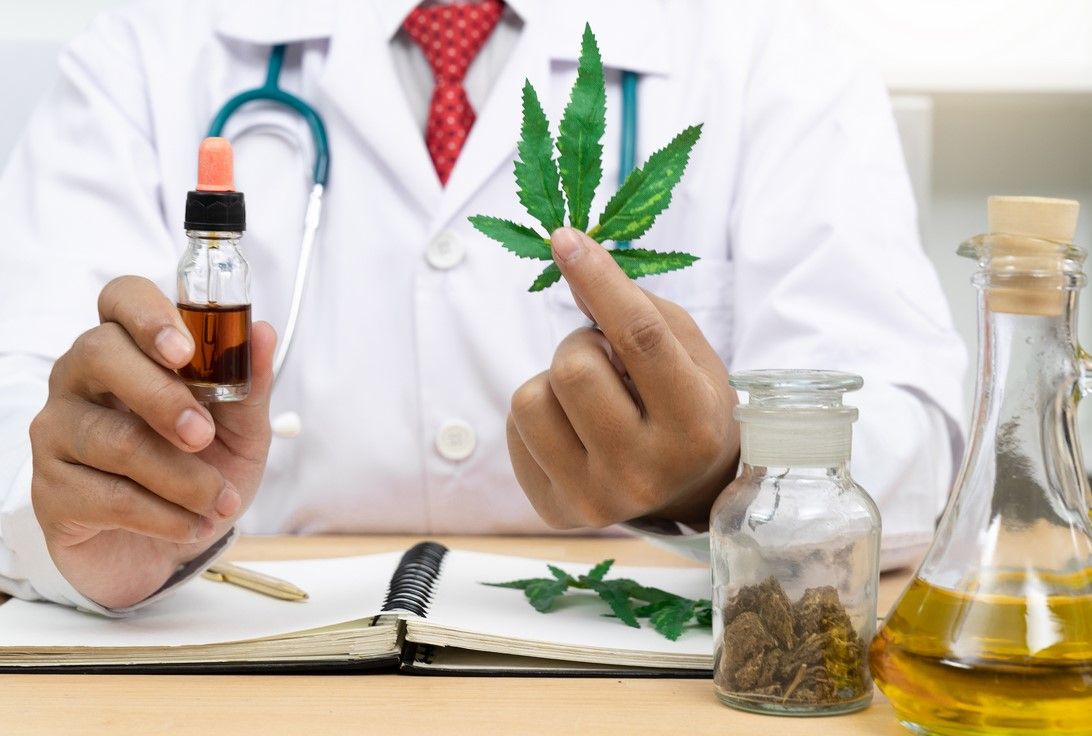
The Movement of Cannabinoids in the Body
When THC is smoked or vaped, it enters the bloodstream through diffusion–the movement of a substance from an area where there is a lot of it to one where there is less. There are special tissues in the lungs called alveoli that allow oxygen and carbon dioxide to be exchanged via diffusion, and THC also uses this passageway into systemic circulation.
THC can also enter the body by being inhaled. However, edible cannabis sends the cannabinoid through the stomach and liver first where it is metabolized and converted into an even more potent molecule named 11-hydroxy-THC.
Inhaled THC enters the bloodstream and doesn’t have to go through your digestive system, so it starts working sooner. But both form of THC end up in the same place eventually. They get carried by the blood to the brain where they can pass though the semi-permeable blood-brain barrier and then enter into the central nervous system – which is effectively like the command centre for our bodies.
When they reach their target, these molecules begin to alter how our neurons communicate. The way we experience regular reality is determined by the routine firing of neurotransmitters such as gamma-aminobutyric acid (GABA), glutamate, dopamine, serotonin, and other key chemicals. But chaotic synthesis, discharge, and degradation are not sufficient to keep all of this in equilibrium—a finely tuned system keeps everything under control.
The Role of the ECS
The endocannabinoid system (ECS) is responsible for regulating the transmission of various neurotransmitters from one neuron to another. Cannabinoids such as THC also bind with this body-wide network of receptors, enzymes, and signalling molecules to produce effects.
Take a few moments to rummage through your brain for the file labeled “biology” from your school days; you might recall how synapses function. The axon of the presynaptic neuron, the dendrite of the postsynaptic neuron, and the synaptic cleft are all components of these structures (the gap between the two).
All neurotransmitters move in an “anterograde” manner, which means they travel from the presynaptic cell to the postsynaptic cell via the synaptic cleft. The ECS, as the traffic manager of this network, sends signaling molecules known as endocannabinoids backward across the synaptic cleft via a “retrograde” flow of movement.
THC, on the other hand, comes in to play. This psychoactive cannabinoid mimics the function of our endocannabinoids. The molecule docks to ECS receptor landing platforms and controls neurotransmitter flow after entering the brain. THC and its breakdown products, on the other hand, enter like a flood into the ECS and interfere with neurotransmitter transmission.
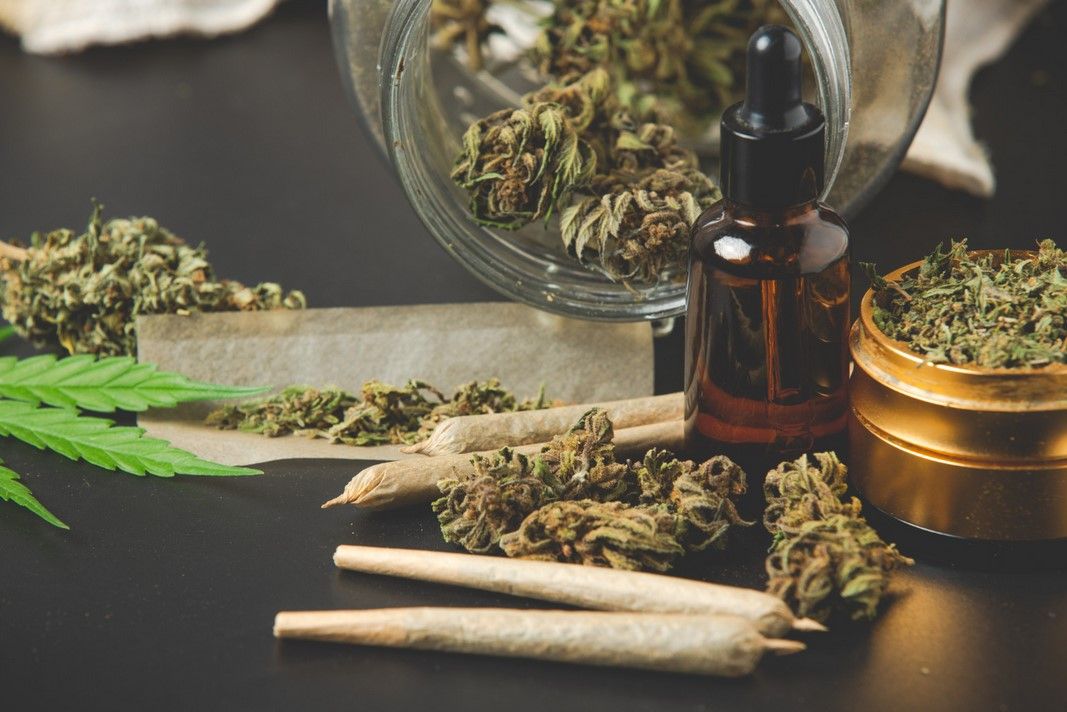
Now, apply this mechanism of action to the 85 billion neurons and 100 trillion connections between them in the human brain, and it’s no surprise that cannabis makes us feel so good and enhances our senses.
Researchers are still investigating how THC interacts with certain brain chemicals. However, they are confident that the cannabinoid deactivates or “unplugs” the default mode network (DMN).
The default network (DMN) is made up of many brain regions that become active when we are at rest. This network enables us to daydream, consider our past, and get lost in thought. Engaging in a task that need attention, on the other hand, shuts down this network and allows us to focus only on what’s in front of us.
Unplugging the DMN enables us to perceive ordinary and quotidian events in a new light. This might be why nature seems so beautiful when high, as well as why music, food, and films have a far greater impact on us while stoned.
What Does It Feel Like to Be High?
All of this scientific jargon is fine, but it won’t tell you how using marijuana will make you feel. Even though THC operates on the same biochemical pathways in everyone, many variables influence the experience. As a result, people will have various highs from the same dose of THC, even when they’re smoking the same souche. That being said, there are a few common feelings associated with cannabis use.
After a few times getting high, you’ll become more accustomed to the change in state of consciousness. Music will sound more enjoyable, food will taste incredible, and movies will captivate you with their storylines.
Many people find that cannabis helps them become more loquacious and confident, two attributes that usually lead to fascinating conversations. If you ask any cannabis user, they’ll likely tell you some of the most intellectually stimulating chats they’ve ever had were while under the influence of the herb.
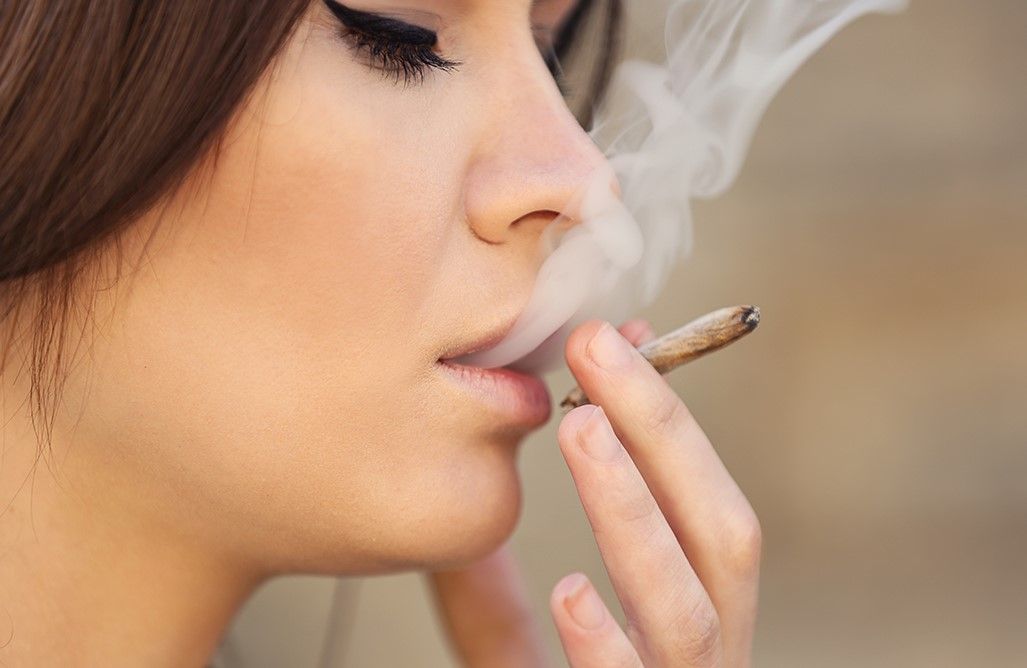
How to Tell When You’re High
As you become more aware of the effects of THC, you’ll begin to notice that you’re beginning to feel “odd.” Many of these cognitive changes are good, but others are bad and can cause users to feel anxious.
Pleasant Sensations
When you’ve taken the correct amount in the suitable conditions, you’ll mostly experience the pleasurable effects of being high.
Unpleasant Sensations
This is an issue because, when you take a higher dose than usual, it may become unpleasant from time to time. Other times, though, you could be in a terrible mood or on edge as a result of your settings. These distressing feelings might include:
Stages of the Cannabis High
Everyone experiences being high differently, but the experience usually consists of several typical phases.
- Stage One: After your first drag, you’ll start to feel the THC kicking in. You may cough and have watery eyes, but soon enough your body will feel lighter, your mind more alert, and dopamine will flow through you.
- Stage Two: The peak of the high hits around 20-30 minutes after you finish smoking that bowl or joint. Motivation and creativity begin to surge. You’ll become chatty, sociable, and yearn to discuss whatever’s on your mind.
- Stage Three: The initial high starts to dissipate and is replaced by a more relaxing feeling that spreads throughout the body.
- Stage Four: You touch down back to Earth, reaching sobriety again.
Different Strains Offer Different Highs
You may not be aware, but there are thousands of different types of cannabis strains available. Each one has a different phytochemical makeup, which results in unique psychoactive experiences.
Not only do the levels of THC contribute to the variations in cannabis, but terpenes play a role as well. Terpenes are what create the signature aromas of different strains of cannabis, and they also work with THC and other cannabinoids to create different types of highs.
Therefore, breeders have focused on terpene blends in their new strains to expand the possibilities of psychoactive experiences.
CBD High Vs. THC High
Breeders are also looking for ways to increase the amount of CDB in their plants. Another essential area of study for breeders is THC/CBD enhancement, which is another major concern. CBD, like THC, has no psychoactive side effects. The molecule has a low affinity for the CB1 receptor and instead creates a mild, clearheaded effect that relaxes muscles and calms the mind.
CBD affects the CB1 receptor in an indirect way. It reduces the activity of an enzyme that breaks down anandamide, causing the endocannabinoid to linger and bind to its target more often. CBD might also help reduce unwanted side effects by preventing THC from binding to the CB1 receptor.
Different Methods of Consumption Lead to Different Highs
Cannabis may be consumed in a variety of ways. While each provides a similar general set of effects, the overall feelings are unique.
These are the most common consumption methods:
- Smoking/Vaping: The high is intense and reaches its peak after about 30 minutes. Smoking marijuana is the most manageable experience because users can take one toke at a time until they reach their desired level of intoxication. The high lasts around 4-8 hours on average.
- Edibles: Cannabis consumers who eat it enjoy a significantly more powerful experience. THC is absorbed through the stomach and into the liver. The organ transforms 11-hydroxy-THC, a far more potent and longer-lasting form of the cannabinoid, into it in the liver. The edible high takes anywhere from two to twelve hours to set in, with a duration of up to twelve hours.
- Sublingual: Placing tinctures or oils underneath the tongue (sublingual) is a method of consumption where cannabinoids rapidly pass into the bloodstream via the capillaries of thin tissue. This simple and fast method has a similar onset time and duration to inhaling cannabis.
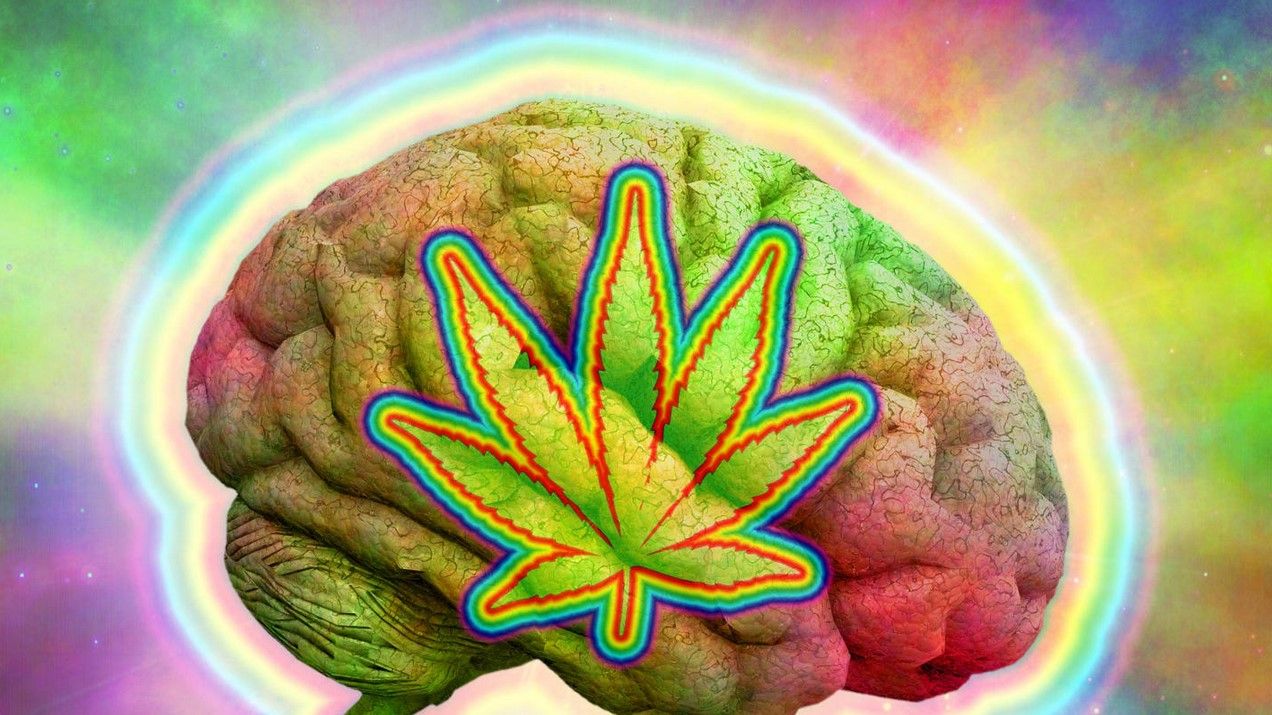
Mind High vs. Body High
The effects of cannabis strains come down to the phytochemical cocktails within each cultivar. Varying levels of cannabinoids and terpenes work together to create different psychoactive outcomes.
For a long time, people assumed that all cannabis strains could be put into one of two categories: indica and sativa. These Old school thoughts believed that each subspecies had different effects. It was thought that indica strains would make you more tired, while sativa strains were known for making users more awake.
Although both indica and sativa cannabis plants have distinct differences, recent studies show that these rarely contribute to the psychoactive effect. Cannabis scientists now recommend using the terms “chemovar”, “chemotype”, or “chemical variety” to group different strains of cannabis together. Although THC is present in many strains and causes psychoactivity, it’s the less potent aromatic terpenes that produce such a diverse range of effects.
Chemovars play a significant role in determining the effects of a particular strain. For example, those high in limonene tend to produce more cerebral highs, while those higher in myrcene are more likely to result in body highs. Below, find out more about the differences between these two types of effects.
Body high:
- The perfect way to relax after a long day, our stoning sensation will make your body feel heavy and soothing.
- A sense of apathy and heaviness that locks you to your couch.
Head high:
- At the same time, there’s a lot of stimulation for your brain and plenty of cognitive energy to keep you occupied. –
- A desire to joke around and giggle.
Why Do People Think Differently When High?
Because cannabis affects how our mind functions, it might help us to become open to new ways of thinking.
Routinely, our minds are mainly focused on one thought at a time while we go about our lives. This single-mindedness is called convergent thinking, and it relies heavily on logic, numbers, facts, and linearity.
Cannabis enables individuals to enter a unique state of mind known as divergent thinking. This heightened level of creativity allows users to explore thoughts in a broader, horizontal manner. With cannabis, we are able to expand our perspective, shift the way our brains think, and notice things we typically would not have observed before.

